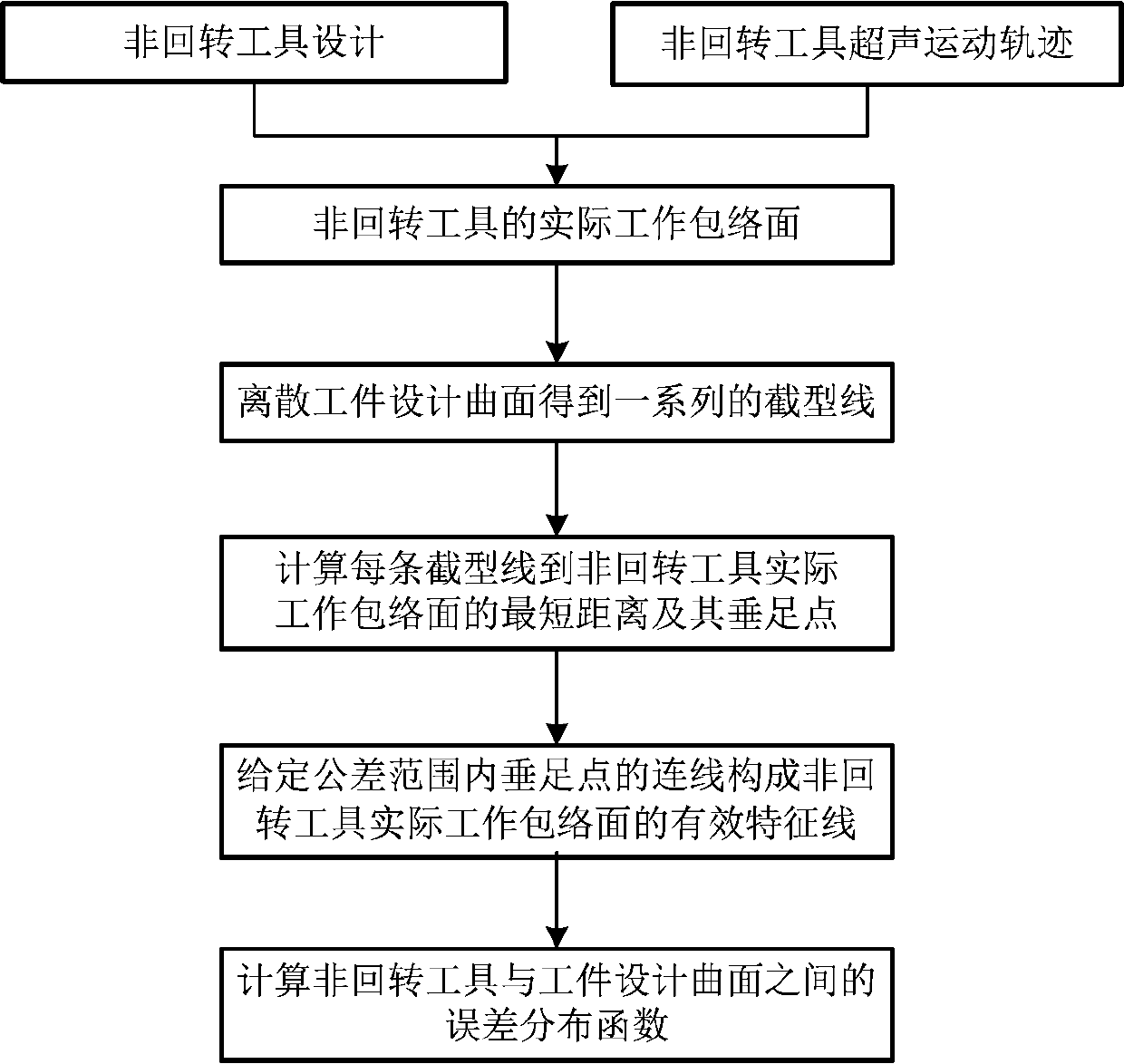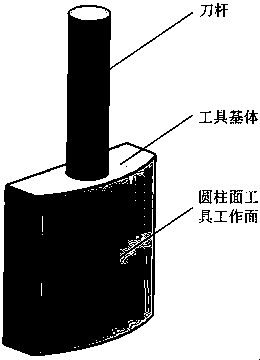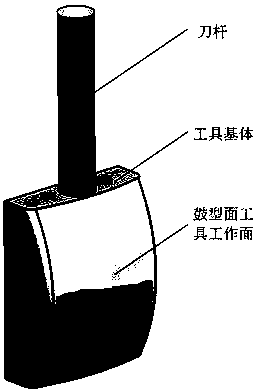Method for solving effective characteristic line of non-rotary tool through discrete workpiece curved surface
A non-rotation, feature line technology, applied in computer parts, special data processing applications, instruments, etc., can solve the problem that the error distribution of tool and workpiece design surface is difficult to accurately solve.
- Summary
- Abstract
- Description
- Claims
- Application Information
AI Technical Summary
Problems solved by technology
Method used
Image
Examples
Embodiment Construction
[0022] A method of the present invention for solving the effective characteristic line of a non-rotating tool through a discrete workpiece surface, the basic flow is as follows figure 1 As shown, its preferred specific implementation method includes:
[0023] Step A, according to the geometric shape of the non-rotating tool and the relative motion relationship of the tool, the actual working envelope surface of the non-rotating tool is solved by using the longitude / latitude method and the traditional envelope theory. Described step A specifically is:
[0024] (1) The design of non-rotating tools is analyzed according to the geometric shape of the workpiece design surface (such as ruled surface, free-form surface, etc.). If the workpiece design surface is a ruled surface, you can choose a non-rotating tool with a cylindrical surface, such as figure 2 shown; if the workpiece design surface is a free-form surface, you can choose a non-rotating tool with a drum surface, such as ...
PUM
 Login to View More
Login to View More Abstract
Description
Claims
Application Information
 Login to View More
Login to View More - R&D Engineer
- R&D Manager
- IP Professional
- Industry Leading Data Capabilities
- Powerful AI technology
- Patent DNA Extraction
Browse by: Latest US Patents, China's latest patents, Technical Efficacy Thesaurus, Application Domain, Technology Topic, Popular Technical Reports.
© 2024 PatSnap. All rights reserved.Legal|Privacy policy|Modern Slavery Act Transparency Statement|Sitemap|About US| Contact US: help@patsnap.com










